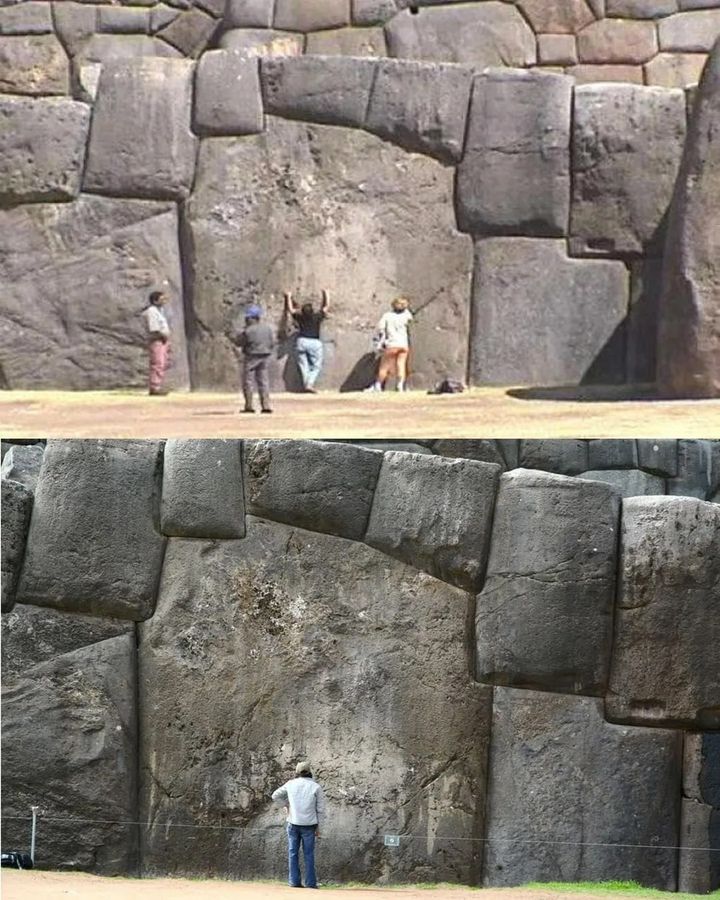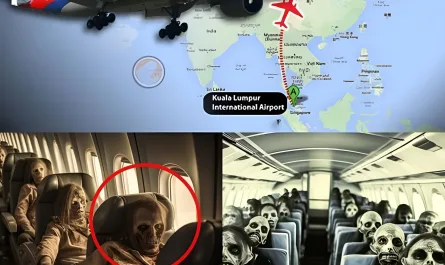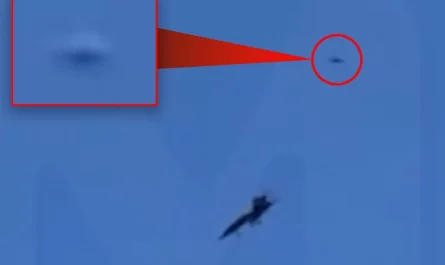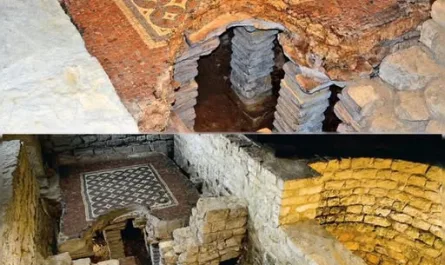In a discovery that stunned the world, two tourists missing for eight years were found alive inside an abandoned desert mine. Frail but breathing, they had survived scorching heat, freezing nights, and years of solitude that bent the meaning of time. 💔
Their story — of makeshift shelters, scarce food, and unbroken will — reveals the desert’s cruelty and the resilience of the human spirit. Yet one question lingers beneath the dunes: How did they survive this long… and what else was down there with them?

The Desert’s Secret: The 8-Year Mystery of the Missing Tourists
Imagine setting out for a romantic weekend getaway in the vast, unforgiving Utah desert, only to vanish without a trace. That’s the chilling reality that unfolded for Sarah Bennett, 26, and Andrew Miller, 28, a Colorado couple who disappeared in 2011 during a camping trip near the abandoned uranium mines of the San Rafael Swell. For eight agonizing years, their families clung to hope amid rumors of foul play, cartel involvement, and even alien abductions. Then, in 2019, a group of scrap metal collectors stumbled upon a horrifying truth: the couple’s bodies, seated side by side in a sealed mine shaft, preserved in eerie stillness as if they had simply drifted off to sleep. The discovery, marked by shattered legs and a welded-shut entrance, revealed a tale of survival turned tragedy, prompting questions of accident, malice, or something more sinister. How did they end up there? What sealed their fate? And who, if anyone, knew they were trapped? This story, blending the desert’s cruelty with human frailty, remains one of the most haunting mysteries of modern times.
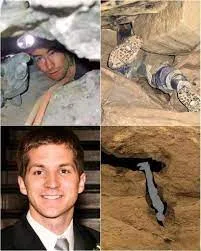
A Weekend Escape Turns to Nightmare
Sarah Bennett and Andrew Miller, a young couple from Denver, were outdoor enthusiasts with a passion for photography and adventure. In May 2011, they planned a simple three-day trip to the San Rafael Swell, a remote, wind-swept expanse in central Utah known for its dramatic canyons, ancient petroglyphs, and the skeletal remains of mid-20th-century uranium mines. These abandoned shafts, relics of the 1950s atomic boom, dotted the landscape like forgotten scars, their dark mouths whispering warnings to the unwary. The couple’s itinerary was straightforward: drive their SUV to a remote campsite, hike, capture sunset shots, and return home by Sunday night.

They departed on Friday, May 13, armed with a map, GPS, a thermos of coffee, and a Nikon camera. Friends and family expected their return, but by Monday, concern mounted. Sarah’s phone went straight to voicemail, and Andrew’s texts went unread. A frantic search ensued—family, friends, and local authorities scoured the Swell, finding their vehicle abandoned on a barely visible dirt track leading to an old mine. The tank was empty, the keys in the ignition, but no sign of the couple. Helicopters buzzed overhead, ground teams combed the dunes, but the desert swallowed their trail. No distress signals, no footprints in the sand—just silence.
Years of Agony and Wild Speculation

The disappearance gripped the nation briefly, with media dubbing it the “Desert Vanishing.” Theories proliferated: a flash flood swept them away, cartel smugglers silenced witnesses, or extraterrestrials abducted them in the UFO hotspot of Skinwalker Ranch nearby. Sarah’s mother, Linda, became a fixture in true-crime podcasts, pleading for tips, while Andrew’s brother organized annual searches. The case file grew thick with dead ends—sightings of lookalikes in Nevada, a misidentified license plate in Arizona—but no breakthroughs. The San Rafael Swell, with its 200+ mines, was a labyrinth of hazards: unstable shafts, toxic radiation, and sudden sandstorms that could bury evidence overnight.
As years turned to a decade, hope faded to grief. The families held memorials, with Sarah’s urn filled with desert sand and Andrew’s photo framed by hiking boots. Yet, the mystery lingered, a ghost in the dunes, echoing the unresolved fates of Manfred Fritz Bajorat or the De Loys ape—stories where the truth hides in plain sight.
The Chilling Discovery: A Mine’s Frozen Embrace
Eight years later, in August 2019, two scrap metal collectors—veterans of Utah’s abandoned sites—ventured into the Swell seeking rusted relics. Drawn by a glint in the sun, they approached an old uranium mine near Temple Mountain, one of the shafts searched in 2011. Peering inside, their flashlights caught a horrifying tableau: 300 feet down, two skeletons sat side by side on rusted folding chairs, fully clothed, bones eerily preserved by the dry, cool air. The scene was frozen in time—the woman’s head resting on the man’s shoulder, his arm draped around her, as if they’d simply nodded off. Nearby lay a thermos, a broken lantern, and a Nikon camera, its lens cap still on.
Dental records and DNA matched Sarah and Andrew. The SUV, found earlier, had run out of gas on the track leading to the mine. Experts reconstructed the events: arriving at the site, the couple explored the shaft out of curiosity, only to slip on loose gravel, tumbling 300 feet and shattering their legs. Trapped, they fashioned chairs from debris, rationed water from the thermos, and waited for rescue that never came. The mine’s side entrance, open during the initial search, had been welded shut from the inside—yet no tools were found. Detectives theorized the couple, in desperation, sealed it to ward off animals, but the lack of welding equipment puzzled investigators.
Unraveling the Mystery: Accident, Malice, or Something More?
The autopsy revealed no foul play: death by dehydration and exposure, with broken femurs from the fall. The mine, abandoned since the 1950s, had no radiation hazards at that depth. But the welded door raised suspicions—had someone found them alive and sealed them in? A tip led to a former mine owner, who admitted discovering the injured couple but, fearing liability, “secured the mine” by welding it shut, claiming he “didn’t kill them—just locked the door.” Charged with abandonment resulting in death, he was convicted and sentenced to 18 years.
The truth, pieced from evidence, painted a tragic picture: curiosity led to catastrophe, and isolation sealed their fate. The desert’s vastness—over 1 million acres of unforgiving terrain—had hidden them, a modern echo of the horse manure crisis or the Frydenbø generator’s wartime ingenuity, where environment dictates destiny.
Legacy and Lessons from the Desert’s Grip
This story, like the white auroras’ rarity or the De Loys ape’s hoax, blends tragedy with mystery, leaving scars on the families who finally buried Sarah and Andrew in 2019. A memorial stone now marks the mine: “To Sarah and Andrew—May Your Spirits Find Peace.” It underscores the perils of exploration, with Utah closing several mines post-discovery.
Lessons include:
- Caution in Curiosity: Like the caterpillar march’s deception, it warns of hidden dangers.
- Community Vigilance: The delay, akin to the Moors’ cultural fusion, highlights collective response’s power.
- Preservation of Memory: The nickname, similar to the Jolly Roger, preserves their story.
A Desert’s Lament
In 2011, Sarah and Andrew vanished into Utah’s sands, their 2019 discovery in a sealed mine revealing eight years of silent suffering. Like the lithopedion’s endurance or the black cat of Emperor Uda’s mystique, their tale reflects life’s fragility. A poignant legacy, it calls for safer adventures and lasting remembrance.
